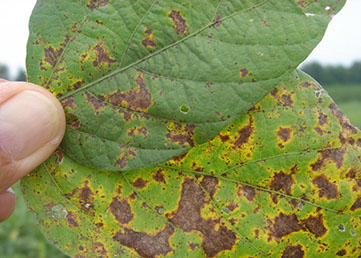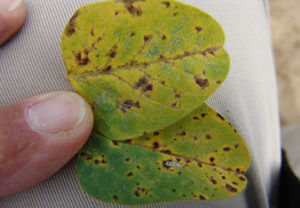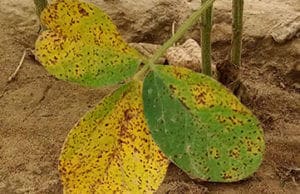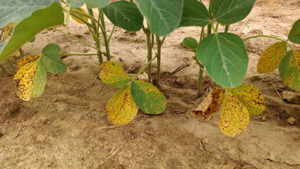Brown spot (also called Septoria brown spot) is caused by the fungus Septoria glycines, and it causes irregular, dark brown spots usually in the lower canopy. Lesions vary from minute specks to 4 mm in diameter and adjacent lesions may coalesce to form irregularly shaped blotches. With highly susceptible varieties and during wet, warm weather lesions can spread across the canopy and cause premature defoliation. Lesions can also occur on stems, branches, petioles, and pods but are not sufficiently distinct to be diagnostic as herbicide burns early in the season look very similar.



